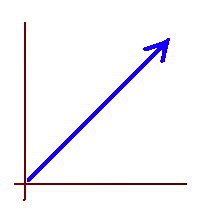The short answer is, because it is not a mathematical operation. Not in the sense addition, subtraction, multiplication and division are.
For most people, mathematics is about crunching numbers. When they are doing math homework, or preparing for an exam, they expect to be adding, subtracting, multiplying, dividing, deriving, or integrating, or calculating square roots, or standard deviations, averages, percentages, or otherwise combining two or more numbers into a final numerical answer.
However, when we are following the step-by-step solution to an algebraic equation, oftentimes substitution is one key step in the sequence, and substitution is an editing operation performed on a line of text. It is a special kind of cut-and-paste, find-and-replace action that has found a proper place as a drop-down menu item inside word processing computer software.
If you use a computer-like device to type letters, notes, or messages, you are probably familiar with that menu item, following the sequence of buttons
Edit > Find > Find and Replace > Replace All
that you can use to change one word or phrase into another all across the selected part of your document. The computer automatically does that for you, saving you the time, effort, and risk of errors you would take if you did it yourself visually and manually, searching line by line, phrase by phrase, and word by word to make your desired replacement in all places.
That is what substitution is about, replacing one expression by another expression, under the assumption that they represent the same numerical value.
What stumps many people when they stumble upon a substitution step while following the solution to an algebraic equation, is their own expectation that every step had to be “mathematical,” meaning: “number-crunching-y” in one way or another. But substitution is editing, it is cutting and pasting, it is not multiplying, it is finding and replacing, it is not adding.
So, in many people’s minds, substitution is not math. They just don’t see the substitution step because they are not expecting to see it. I mean, they see it but they don’t recognize it as math because it is not math in the same sense addition and multiplication are.
They get so confused by the fact they are seeing something they were not expecting to see, that the surprise does not allow them to see whatever else is going on at that step.
It is as if, in some part of their mind they are going like:
“Math, math, math, not-math, .. wait, what?”
It is O.K. There are some seemingly non-mathematical procedures that are part of math, too, especially logic. You just have to learn to expect them to show up every once in a while, so they won’t take you by surprise.





No comments:
Post a Comment